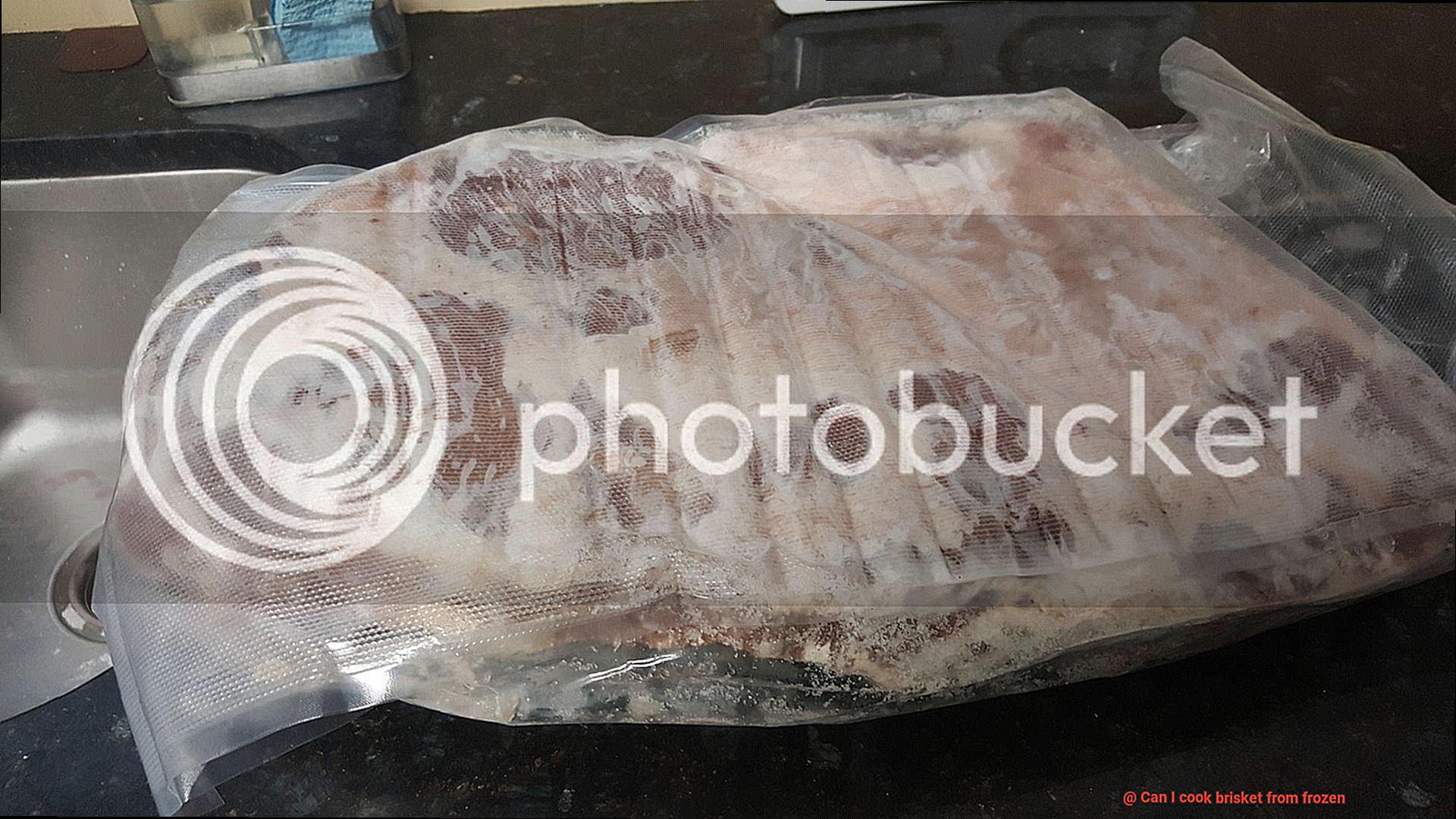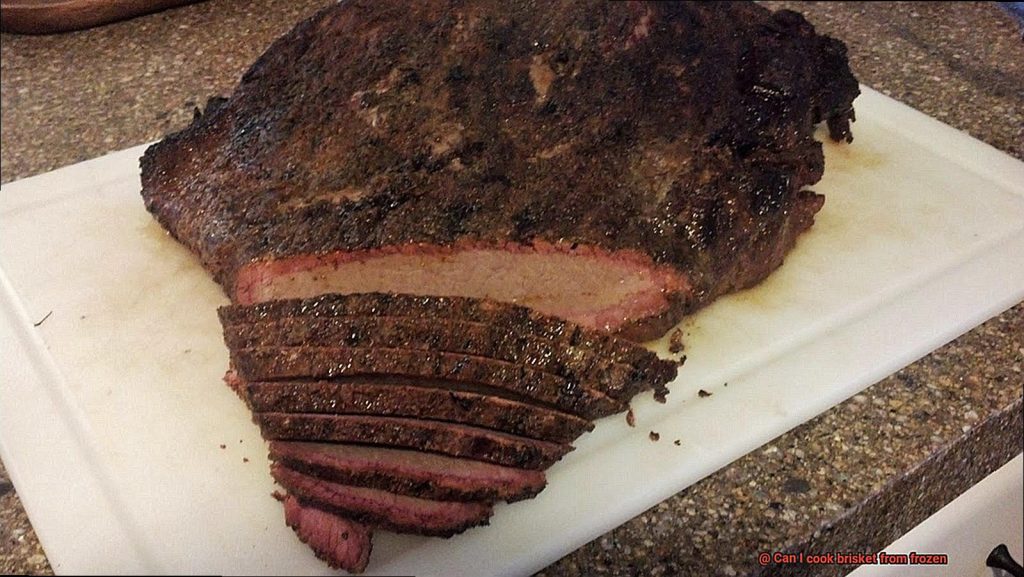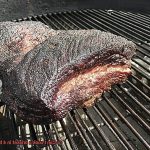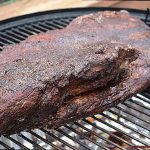Imagine this: a tantalizing, melt-in-your-mouth brisket that steals the show at your dinner table. But here’s the twist – you cooked it the day before and plan to reheat it. Intriguing, right? This unconventional cooking method has sparked endless curiosity and lively debates among food enthusiasts. Can you really pull off this culinary magic trick without sacrificing flavor and tenderness? Today, we embark on a journey into the realm of slow-cooked wonders, unraveling the age-old question: can you cook brisket the day before and flawlessly reheat it? Get ready to uncover the secrets behind this game-changing technique that will transform your next gathering into an effortless feast.
Contents
What is Brisket?
To achieve the pinnacle of brisket perfection, it demands patience and a slow cooking process that tenderizes tough fibers and renders its delectable fat. However, did you know that cooking brisket in advance and reheating it can elevate the culinary experience? In this article, we will delve into the essence of brisket, exploring its unique qualities and providing expert tips on reheating methods to maintain its exceptional taste and texture.
Understanding Brisket:
Brisket is a prime cut derived from the lower chest region of a cow. This delectable meat selection boasts a distinct marbling, consisting of luscious layers of fat that contribute to its juiciness and flavor. Weighing between 8 to 20 pounds depending on the size of the animal, brisket’s generous size makes it perfect for large gatherings or for those who appreciate leftovers.
Cooking Brisket in Advance:
The slow cooking nature of brisket makes it an ideal candidate for pre-preparation. By cooking your brisket one day ahead of your event or gathering, you give it the necessary time to fully embrace the slow cooking process without feeling rushed. This approach also allows you to efficiently manage your time and create an unforgettable dining experience.
To prepare brisket in advance, begin by marinating or seasoning the meat before embarking on its slow-cooking journey. Whether you choose to smoke it on a grill or braise it in the oven, allocate ample time for the flavors to harmonize and develop. Once cooked to perfection, tightly wrap the brisket in foil or place it in an airtight container before refrigerating overnight. This method ensures optimal moisture retention and prevents any unwelcome dryness.
Reheating Brisket:
When the moment arrives to unveil your exquisite brisket, reheating it with care is paramount to preserve its tenderness and flavor. Below are a few recommended methods:
- Oven: Preheat your oven to a low temperature, around 250°F (120°C). Place the wrapped brisket on a baking sheet or in a baking dish, and heat for approximately 1 hour per pound of meat. To prevent dryness, consider adding a splash of beef broth or barbecue sauce to the foil packet or baking dish.
- Grill: Preheat your grill to a low temperature, creating an indirect heat setup. Place the brisket on the coolest part of the grill, covering it with foil or utilizing a grilling pan to retain moisture. Reheat for approximately 1 hour per pound, monitoring the internal temperature using a meat thermometer.
Advantages of Cooking Brisket the Day Before and Reheating
Cooking brisket the day before and reheating it is a secret weapon that will elevate your grilling game to new heights. This technique offers several advantages that will change the way you approach cooking brisket forever.
First and foremost, let’s talk about flavor. Slow-cooked brisket is already a flavor bomb, but letting it rest overnight takes those flavors to another level. The collagen breaks down into gelatin during the low and slow cooking process, resulting in a melt-in-your-mouth texture. Giving it time to rest allows the flavors to mingle and intensify, creating a symphony of deliciousness that will make your taste buds sing.
Now, let’s address the issue of time-saving. Cooking brisket requires patience, dedication, and most importantly, time. By cooking it the day before, you can save yourself hours of babysitting the grill on the day of your big cookout. Instead, you can focus on other preparations or even take some time to relax and enjoy yourself. Plus, reheating the brisket is a breeze compared to starting from scratch.
Speaking of reheating, let’s not forget about how much easier it is to slice a chilled brisket. Slicing hot meat can be a challenge when trying to achieve those perfect thin slices. However, with a chilled brisket, slicing becomes effortless. You’ll be able to cut through the meat with ease, resulting in beautifully even slices that are perfect for sandwiches or any other dish you have in mind.
Now let’s address the elephant in the room – stress. Cooking a brisket can be intimidating, especially for beginners. The fear of overcooking or undercooking can be enough to send anyone into a panic. But by cooking your brisket the day before, you can eliminate some of that stress. You’ll have more control over the cooking process, allowing you to plan and execute without feeling rushed or overwhelmed.
Last but certainly not least, let’s talk about moisture. We’ve all had the unfortunate experience of biting into a dry and tough piece of brisket. It’s enough to make you want to hang up your apron and never grill again. But fear not, because cooking your brisket the day before and reheating it is the secret to retaining moisture. During the reheating process, the meat has a chance to reabsorb some of those precious juices, resulting in a moist and succulent brisket that will have your guests begging for seconds.
How to Properly Reheat Brisket

If you love cooking brisket, then you know that reheating it properly is essential to maintain its tenderness and flavor. Whether you’re prepping for a large gathering or simply have leftovers, reheating brisket requires some special care. In this comprehensive guide, we will explore three popular methods for reheating brisket: using the oven, slow cooker, and microwave. Get ready to indulge in perfectly reheated brisket that will have your taste buds dancing.
Method 1: Reheating Brisket in the Oven
To begin, preheat your oven to around 325°F (163°C) and slice the brisket into thin, even slices. Place the sliced brisket in a baking dish or on a sheet pan, and cover it tightly with foil to lock in the moisture. This step is crucial for preventing any dryness from sneaking in during the reheating process. Allow the brisket to reheat in the oven for approximately 20-30 minutes per pound. To ensure it’s fully reheated, use a meat thermometer to check that the internal temperature reaches 165°F (74°C). Once it’s perfectly heated through, let the brisket rest for a few minutes before serving.
Method 2: Reheating Brisket in a Slow Cooker
For those who prefer a low and slow approach, using a slow cooker is the way to go. Begin by placing the sliced brisket in your trusty slow cooker or crockpot. Add any leftover juices or sauce from the original cooking process to enhance the flavor. Set the slow cooker to low heat and let it work its magic for several hours. Keep an eye on the internal temperature using a meat thermometer and ensure it reaches 165°F (74°C). To avoid overcooking, check the temperature regularly. Once it’s reached the desired temperature, let the brisket rest before serving to allow the flavors to meld together beautifully.
Method 3: Reheating Brisket in the Microwave
When time is of the essence, the microwave can be a lifesaver. Start by placing the sliced brisket in a microwave-safe container with a lid or cover it tightly with microwave-safe plastic wrap if no lid is available. Heat the brisket in short intervals, checking and stirring between each interval to ensure even heating. Adding a small amount of liquid, such as beef broth or barbecue sauce, will keep the meat moist and flavorful. Use a meat thermometer to check that the internal temperature reaches 165°F (74°C). Once it’s reached the desired temperature, give it a brief rest before digging in.
Best Methods for Reheating Brisket
Brisket, the crown jewel of smoked meats, requires hours of love and care to achieve perfection. But what happens when you find yourself with leftover brisket? Fear not, my grilling comrades. In this comprehensive guide, we’ll explore the best methods for reheating brisket, ensuring that you can savor that smoky goodness all over again.
The Oven Method: Slow and Steady Wins the Race
The oven is your trusty ally in the quest for perfectly reheated brisket. Preheat it to 250°F (120°C), creating an ideal environment for gently heating the meat without drying it out. Place your brisket in a baking dish and cover it tightly with foil to lock in all that amazing moisture. Remember, slow and steady wins the race – reheat it for about an hour per pound. This method guarantees tender and succulent results.
The Slicing Hack: Even Heat Distribution and Easier Handling
Before reheating, slice your brisket. This simple step not only ensures even heat distribution throughout the meat but also reduces the risk of dryness. Additionally, it makes handling those mouthwatering slices a breeze.
Adding Moisture and Flavor: Elevate the Juiciness Factor
To amp up the juicy factor and infuse even more flavor into your reheated brisket, pour some beef broth or your favorite barbecue sauce over the sliced meat before covering it with foil. This extra step will keep your meat moist and give it an irresistible punch of deliciousness.
The Internal Temperature Check: Safety First
Always use a meat thermometer to ensure your reheated brisket reaches an internal temperature of at least 165°F (74°C). This guarantees not only that your meat is safe to eat but also that any lingering bacteria are eradicated, allowing you to enjoy your meal worry-free.
Resting Before Serving: Patience Pays Off
Once your brisket has reached the desired temperature, resist the urge to dive right in. Let it rest for a few minutes before serving. This crucial step allows the juices to redistribute throughout the meat, resulting in a more tender and flavorful experience.
Quick Alternatives: When Time is Not on Your Side
If time is not on your side, there are a couple of alternative methods for reheating brisket. You can use a slow cooker or microwave, but be aware that these methods may not yield the same mouthwatering results as the oven. Nevertheless, they can be convenient options when you’re in a pinch.
Tips for Maintaining Moisture and Flavor When Reheating
Brisket, the succulent and tender cut of meat, requires careful attention when reheating to maintain its moisture and flavor. Leftover brisket can easily become dry and lackluster if not reheated properly. Here are five tips to help you achieve a juicy and flavorful reheated brisket.
- Wrap it up: Before refrigerating your cooked brisket overnight, ensure that you tightly wrap it in foil or place it in an airtight container. This technique acts as a shield, trapping the natural juices and preventing the meat from drying out during the reheating process.
- Add some liquid: To infuse moisture and enhance the flavor of your reheated brisket, consider adding a small amount of liquid, such as beef broth or barbecue sauce. This addition helps to prevent the meat from becoming dry while providing an extra burst of savory goodness. Be cautious not to add too much liquid, as this can result in a soggy texture.
- Low and slow: Opt for a slow and low reheating method to ensure even heating without overcooking the meat. Set your oven or grill to a low temperature, around 250°F (120°C), allowing the brisket to gradually warm up. This gentle approach guarantees that each bite remains tender and packed with juicy goodness.
- Steam it up: To retain moisture during the reheating process, create a steamy environment by placing a pan of water in the oven or grill alongside the brisket. The steam generated will envelop the meat, preventing it from drying out and resulting in a moist and flavorful end product.
- Rest before serving: Once your reheated brisket reaches an internal temperature of at least 165°F (74°C), resist the temptation to serve it immediately. Instead, let it rest for a few minutes. This vital step allows the juices to redistribute throughout the meat, resulting in a more succulent and flavorful dining experience.
Time Required for Reheating
Calling all barbecue lovers. We’ve all been there – you have some leftover brisket and you’re wondering how to bring it back to its mouthwatering glory. Fear not. I’m here to guide you through the time required for reheating brisket using three popular methods: oven, grill, and microwave.
Let’s dive into the trusty oven method. Preheat your oven to a cozy 250°F (120°C) and place your brisket in a baking dish. Cover it up with a snug aluminum foil blanket to lock in all that juicy goodness. Now, here’s where the magic happens – the time required for reheating will depend on the size of your brisket. As a general rule of thumb, allow approximately 1 hour per pound. So, if you’re dealing with a hefty 4-pound brisket, get ready to indulge in the aroma of slow-cooked perfection for around 4 hours.
For those grilling aficionados out there, why not infuse your leftover brisket with some smoky love? Fire up your grill to a medium heat and place the brisket on its sizzling grates. Keep a watchful eye on it and give it an occasional flip to ensure even heating. Again, the time required will depend on the size of your brisket, but expect a tantalizing wait of about 1-2 hours. The bonus? You’ll be rewarded with that irresistible charred flavor that only a grill can deliver.
Now, let’s talk about the microwave – perfect for those moments when time is of the essence. But beware: this method may result in slightly drier meat compared to other methods. To prevent any dryness, place your brisket in a microwave-safe dish and cover it with a lid or loose plastic wrap. Heat it on medium power for around 2 minutes per pound, making sure to check and stir occasionally for even heating.
Regardless of which method you choose, keep a close eye on that internal temperature. We want our reheated brisket to reach a safe 165°F (74°C). Once it’s reached that sweet spot, give it a few minutes to rest before you slice and serve. This allows those precious juices to redistribute, resulting in a tender and flavorful masterpiece.
Comparing Freshly Cooked vs. Reheated Brisket
Let’s dive into the differences between these two options and explore the factors that affect taste, texture, and aroma.
Freshly cooked brisket is a culinary masterpiece. This mouthwatering cut of meat requires low and slow cooking to reach its full potential. When brisket is freshly cooked, it boasts peak flavors and an irresistible texture. The meat is moist and juicy, thanks to the rendering down of fat that infuses every bite with richness. The exterior of the brisket forms a delightful crust called the bark, which offers a satisfying contrast to the tender meat. Slicing into a freshly cooked brisket reveals a beautiful smoke ring, indicating that it has absorbed all the flavors from the wood or charcoal used during cooking. And let’s not forget about the aroma. The tantalizing smell of a freshly cooked brisket can make your mouth water before you even take a bite.
Now, let’s move on to reheated brisket. Reheating brisket is a common practice for those who want to enjoy it on a different day or for leftover purposes. While reheated brisket can still be delicious, there are some differences compared to its freshly cooked counterpart. One of the main differences is moisture retention. During the reheating process, brisket may lose some of its moisture and tenderness. The heat can further cook the meat, potentially making it drier than when it was first cooked. Additionally, the bark on reheated brisket may lose its crispiness and become softer or even slightly mushy. The vibrant smoke ring that was present in the freshly cooked brisket may not be as prominent since the flavors have had time to meld together.
However, there are factors to consider that can greatly influence how well reheated brisket turns out. The quality of the original cooking and storage methods play a significant role. Properly storing the cooked brisket in an airtight container or vacuum-sealed bag can help retain its moisture and flavors. The reheating method you choose is also crucial. Slow reheating methods, such as using a low oven temperature or a sous vide cooker, are recommended to prevent overcooking and maintain tenderness.
While reheated brisket may not have the same level of freshness as its freshly cooked counterpart, it can still be a tasty and convenient option for enjoying this flavorful meat. Pair it with your favorite sauces or serve it in sandwiches for a delicious meal.
Storing Leftovers
You may be wondering how to store those mouthwatering leftovers for another day of enjoyment. Look no further, because I’m here to share some expert tips on storing leftovers and reheating techniques that will keep your brisket just as tasty as when it first came off the grill.
Let’s start with the basics – temperature. After cooking your brisket, it’s crucial to cool it down quickly to prevent any bacteria growth. Rapid cooling helps maintain the texture and flavor of the meat while ensuring its safety. One method is to divide the brisket into smaller portions or place it in shallow containers. This ensures that the heat dissipates faster and prevents any potential contamination.
Once your brisket has cooled, it’s time to store it in the refrigerator. To maintain its freshness and prevent any air exposure, use airtight containers or heavy-duty plastic bags. Remember, leftovers should be refrigerated within two hours of cooking to preserve their taste and safety.
Now, let’s talk timing. Leftover brisket should be consumed within three to four days of refrigeration. Beyond this time, there’s an increased risk of bacterial growth and foodborne illnesses. So, make a note on your calendar and plan accordingly.
When you’re ready to reheat your brisket, use either an oven or stovetop method for even heating and tender results. To prevent any drying out or overcooking, reheat at a low temperature. Before reheating, remove excess fat or bones for improved texture and flavor.
To keep your reheated brisket moist and flavorful, add a small amount of broth or sauce while reheating. This will help lock in the moisture and enhance the taste.
If you find yourself with more brisket than you can handle, freezing is a great option for longer-term storage. Divide the brisket into smaller portions and tightly wrap them in heavy-duty aluminum foil or freezer bags. Properly stored brisket can be frozen for up to three months.
When it’s time to thaw and reheat your frozen brisket, follow safe thawing methods such as thawing in the refrigerator overnight or using the defrost function of your microwave. Once thawed, you can use the same reheating techniques mentioned earlier.
BHIDWWMPJu0″ >
Conclusion
Cooking brisket the day before and reheating it is a fantastic way to save time and still enjoy a mouthwatering meal. The beauty of brisket is that it actually gets better with time, as the flavors have a chance to meld together overnight. So go ahead and cook that brisket to perfection, let it rest, refrigerate it overnight, and then reheat it the next day for a hassle-free dining experience.
By cooking your brisket in advance, you not only free up valuable time on the day of your meal but also allow yourself the opportunity to focus on other important aspects of your gathering. Whether you’re hosting a backyard barbecue or planning an intimate dinner party, this make-ahead method ensures that you can be the ultimate host without sacrificing flavor or tenderness.
When reheating your brisket, there are a few key tips to keep in mind. First, make sure to slice your meat against the grain before storing it in an airtight container. This will help preserve its juiciness and prevent it from drying out during reheating. When you’re ready to serve, simply place the slices in an oven-safe dish, cover with foil to retain moisture, and heat at a low temperature until warmed through.
The result? A succulent and tender brisket that tastes just as good as if it were freshly cooked. The flavors will have developed even more intensely during their overnight stay in the fridge, leaving you with a melt-in-your-mouth experience that will have your guests coming back for seconds.






